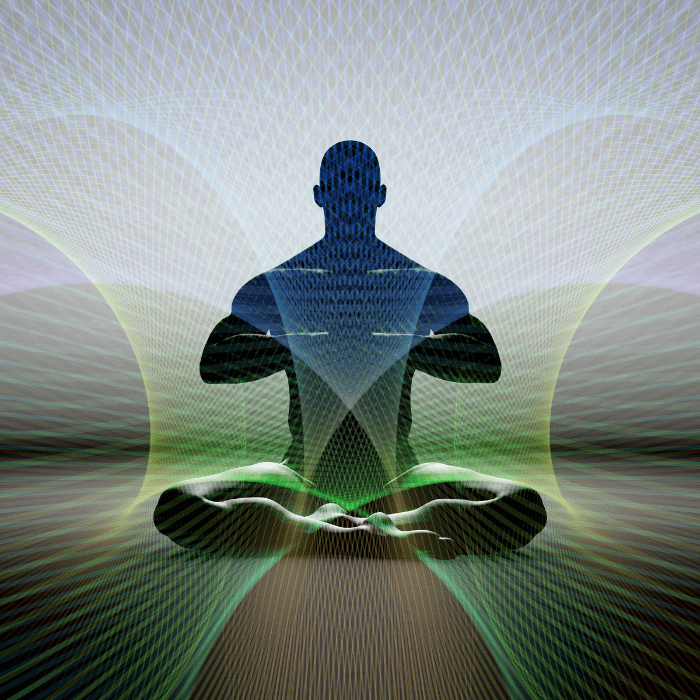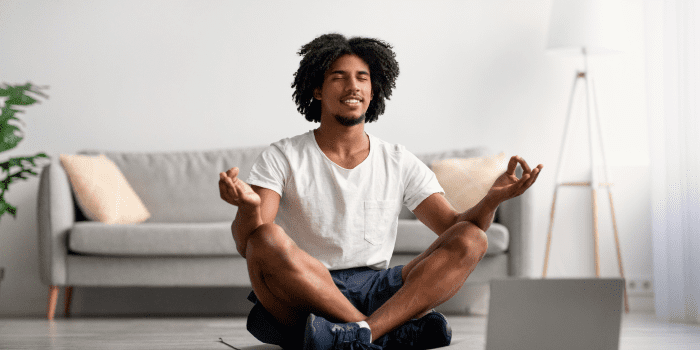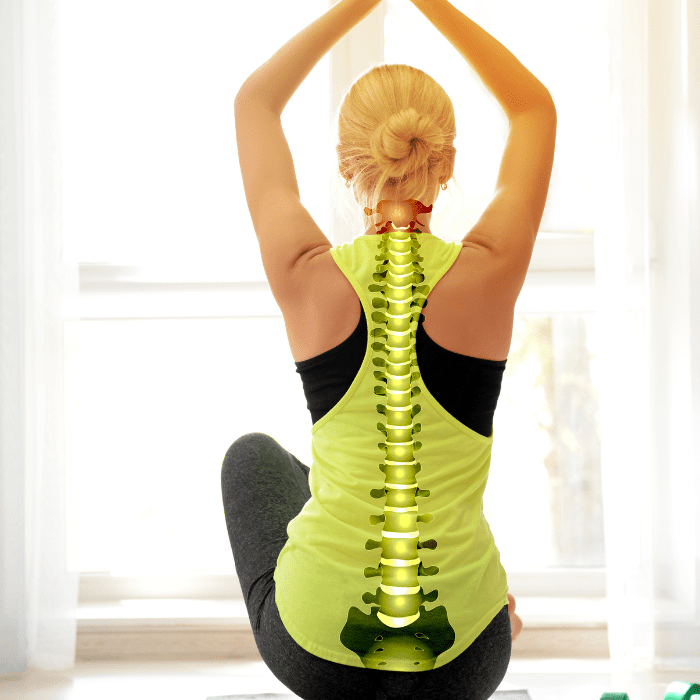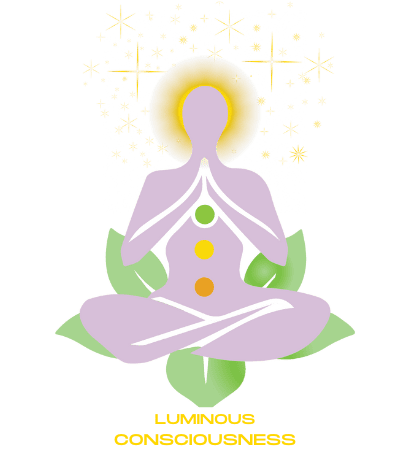Here’s a little transparency: Our website contains affiliate links. This means we may receive a small commission if you click and make a purchase. Don’t worry—there’s no extra cost to you. It’s a simple way you can support our mission to bring you quality content. Learn more at the Affiliate Disclosure page.

Meditation isn’t just a passing trend; it’s a practice with ancient roots that spans various cultures and epochs. Even though it has existed for millennia, people today are turning to meditation more than ever to cope with the hustle and bustle of modern life.
Now, let’s take a moment to understand what meditation is. To be simple, with a 6th grader’s explanation, meditation is getting familiar with the self, going deeper within to the “absolute.” Meditation involves training the mind, such as your body, during physical exercise. It’s about “focusing” your attention and eliminating the stream of jumbled thoughts that may be crowding your mind and causing stress.
Exploring the history of meditation, you’ll find it embedded in many of the world’s spiritual and religious traditions, from Buddhism and Hinduism to Christianity and Islam. Some of the earliest written records of meditation practices hail from the Hindu traditions of Vedantism around 1500 BCE. Over the centuries, the art of meditation has evolved, weaving its way through history. Yet, its essence remains unchanged: seeking inner peace and heightened awareness.
What’s exciting is how meditation has surged in modern culture. Nowadays, with scientific studies backing its benefits, meditation has moved beyond spiritual circles into the mainstream. It’s heralded as a powerful tool for enhancing mental well-being, reducing stress, and improving overall health. Research has shown that regular meditation can help manage anxiety, improve concentration, and even lead to physiological benefits such as lower blood pressure.
So, why has meditation become such a sought-after practice today? Maybe it’s because the world moves at a breakneck speed, and meditation offers a much-needed pause. It invites us to slow down, breathe deeply, and reconnect with ourselves. Meditation provides a pathway to a more balanced and centered life, whether seeking to reduce stress, enhance focus, or find a moment of stillness in your busy day. But understanding the perks of meditation is just the prelude. How do you integrate this practice into your daily life? Well, that will include creating a conducive environment, which is precisely what I’m here to help you within the next section.
Preparing for Meditation: Setting the Stage for Success with 5 Simple Tips
Find Quiet Space:

Let me walk you through the process of creating an ideal environment for meditation. A little preparation can go a long way in enhancing your practice. Let’s start by finding the perfect spot. You want somewhere quiet, where interruptions are as rare as a snowstorm in July. It doesn’t have to be a Zen garden; a cozy corner in your bedroom will do just fine.
When To Meditate:
Now, when should you meditate? That’s flexible. You’ll find out about your body’s rhythm. Try meditating in the morning to set a calm tone for the day or unwind in the evening. For the best and fastest results, meditating twice daily for at most 20 minutes per session is recommended. The key is consistency, so choose something that resonates with you and stick with it.
Get Comfortable:
Comfort is king when it comes to clothing and posture. Your outfit should feel like a familiar and reassuring hug from an old friend. And your posture? Don’t worry too much about imitating a pretzel or sitting in a lotus position if you are not that flexible; sit or lie down in a way that feels sustainable for your session. It is recommended that your spine and neck be straight.

Focus on Your Breath:
The brain has to think, so thoughts will always rush in. Close your eyes and take deep breaths to prevent the mind from going wild. Focus on the sensation of the breath entering and leaving your body. If your mind wanders, gently bring it back to your breath. It is that easy. Refrain from getting irritated if thoughts are rushing in. Go back to the breath.
Use a Guide:
If you’re feeling adrift, guided meditations can be a beacon of light for beginners. They are like having a knowledgeable friend talk you through the practice—you’re not alone in this.
Remember, setting the stage doesn’t require perfection. It’s about creating conditions that support your meditation journey. Once you have these basics, you’re all set to explore the techniques to help you find inner peace and clarity. Tweak as you grow with the practice.
Before you get confused, let’s clarify Meditation Techniques vs. Mediation Types. Understanding this will help you in selecting what will work best for you.
Meditation Techniques for Beginners: Finding What Works for You
I’m going to give you a tour of some beginner-friendly meditation techniques. It’s not a one-size-fits-all; choose something that resonates with you. Let’s start with Body Scan Meditation, which is usually used in mindfulness meditation. This is all about being present. You will focus on the now, observing thoughts and sensations without judgment.
Next is Focused Meditation. You pick a target, like a candle flame, sound, breath, or object, and pour all your attention into it. This isn’t just about concentration; it’s also about training your mind to return to a focal point when it wanders.
If sitting still isn’t your thing, no worries—walking Meditation could be your go-to. It involves walking, yoga, or tai chi—being mindful while your body is in motion.
Breathing Exercise (Pranayama) shouldn’t be overlooked. They’re the backbone of many meditative practices. Breath is life (Prana). You might also want to try Visualization Meditation if you are good at visualizing and dreaming. Your mental image can promote relaxation, focus, and specific emotional states. Chanting or Mantra Meditation involves repeating a word, phrase, or sound to help focus the mind and transcend ordinary thought.

Despite the differences in types and techniques, some meditations combine 1 or 2 aspects of techniques to make them effective. For example, the Transcendental Meditation type uses pranayama to help quiet the mind before incorporating mantra and mindfulness. It is all about what works for me. Even though nothing is written in stone, it is advisable to consult a trainer to ensure you’re doing the right thing and gaining the benefits. Remember, don’t stress too much about getting it perfect. Meditation is a skill that develops over time.
Cultivating a Consistent Meditation Practice: Tips and Encouragement
Establishing a routine might seem daunting initially, but it’s gratifying once you get the hang of it. Start small, five or ten minutes daily, and gradually extend your sessions as you feel more comfortable. Remember, this isn’t a race. You’re laying the foundation for a habit that can positively influence the rest of your life. Over time, it becomes easier and more rewarding. Many meditation sessions last for 20 minutes, but it all depends on the level of experience and add-on practices that are included. More experienced meditators can go for an hour or two.
Some days, you might feel like meditation isn’t making a difference. That’s when patience becomes critical. Meditation takes time and practice to improve, like learning an instrument or a new language. Give yourself the grace to grow at your own pace.
If you’re the type to thrive on support, consider joining a meditation group or using an app. Many are designed to guide beginners and provide a sense of community. Plus, they can offer various meditation styles, which keeps your practice fresh.
The real magic of meditation comes with regular, consistent practice. It doesn’t need to be an hour-long session each day; consistency builds the experience and the benefits. So, choose something that resonates with you and stick with it. You’ll find out about a calmer, more centered version of yourself.
Join a Community
Consider joining a meditation group or attending a workshop or retreat. Sharing the experience can provide support, encouragement, and additional insights.
Final Thoughts
Starting a meditation practice is a beautiful step towards enhancing your well-being and discovering a more profound sense of peace. Remember, there’s no right or wrong way to meditate. The most important thing is finding what works best for you from an experienced trainer and approaching your practice with an open heart and mind.
Happy meditating!

Hi Eric,
I’m just getting into meditation so it was great to read your article! I loved the detail you offered and understanding the history was an unexpected pleasure.
I endeavour to put a least one practice of meditation and focus on my breathing each day, I see you suggested different times of the day, and I love the different types of meditation as well. I have tried at least two of those and look forward to giving the others a go.
I sat by the river with some friends once and meditated – it wasn’t completely successful as we all had our eyes closed and didn’t feel comfortable doing this in a public place. Do you have any suggestions for this kind of meditation?
Thanks for the encouragement! I’m off to try something new now 🙂
Hi Amanda,
I’m glad you enjoyed the article and found the historical insights interesting! It’s fantastic that you’re incorporating meditation into your daily routine. The variety of meditation practices can make the journey more enjoyable and enriching.
Regarding your experience by the river, it’s common to feel self-conscious in public settings, especially when meditating with others. Here are a few suggestions that might help you feel more at ease:
Mindful Walking: Instead of sitting, you could try walking meditation. This involves walking slowly and mindfully, paying attention to each step and the sensations in your feet. It can be easier to maintain in a public place, but it still offers the benefits of meditation.
Guided Meditation: Use a guided meditation app or recording. This can help you stay focused and relaxed, even in a less private setting. Many apps offer nature sounds or calming background music that can enhance your experience by the river.
Open-Eye Meditation: Try meditating with your eyes open, focusing on a single point or the natural scenery around you. This can help reduce the feeling of being watched and keep you grounded in the present moment.
Group Mindfulness: If you enjoy meditating with friends, consider practicing mindfulness activities that don’t require closed eyes, like listening to the sounds around you or sharing a silent moment, focusing on your breathing and the environment.
Feel free to experiment with these techniques and see which resonates with you. Enjoy your journey into meditation, and I’m excited to hear about your new experiences!
Best of luck with your practice!
Warm regards,
Eric.
I just read this guide on meditation, and I found it really insightful. Meditation is such an ancient practice, but it feels so relevant today. I love how it emphasizes that meditation isn’t about perfection but about creating a space where you can connect with yourself and find peace.
I found the article really helpful, but I’m curious about one thing. It mentions different meditation techniques like Body Scan Meditation and Walking Meditation. Could you provide more details on how each technique is practiced and how they differ from one another? Understanding this better might help me choose the best approach for myself. Thank you.
Hey Don Kenny,
Thank you for your thoughtful comment! I’m glad you found the meditation guide insightful and relevant. You’re absolutely right—meditation is indeed an ancient practice, yet it continues to be incredibly pertinent in today’s fast-paced world. The emphasis on creating a space for connection and peace is central to the practice.
Regarding your curiosity about the different meditation techniques, here’s a detailed look at each:
Body Scan Meditation:
How it’s practiced:
This technique involves lying down or sitting comfortably and directing your attention to different body parts, starting from your toes and moving up to your head. You focus on each area, noticing any sensations, tension, or discomfort without judgment.
Purpose:
The goal is to increase body awareness, reduce stress, and promote relaxation. It helps you tune into physical sensations, fostering a deeper connection with your body.
Duration:
It typically lasts 20 to 40 minutes, but you can start with shorter sessions and gradually extend the time.
Walking Meditation:
How it’s practiced:
This involves walking slowly and mindfully, paying attention to the movement of your feet, the sensation of your steps, and your breath. It can be done outdoors or indoors in a quiet space. The key is to walk at a pace that allows you to stay fully present in each step.
Purpose:
Walking meditation helps maintain mindfulness in motion, making it an excellent option for those who find it challenging to sit still. It enhances awareness and grounding, providing a moving meditation experience.
Duration:
You can start with 10-15 minutes, gradually increasing the time as you become more comfortable with the practice.
Key Differences:
Focus: Body Scan Meditation focuses more on physical sensations and relaxation, whereas Walking Meditation integrates movement with mindfulness.
Setting: Body Scan is typically practiced in a quiet, seated, or lying-down position, while Walking Meditation is done in motion, often outdoors or along a designated path.
Experience: Body Scan encourages deep internal focus and relaxation while Walking Meditation promotes mindfulness in action and can enhance grounding and awareness.
I have put comprehensive content about Mediation Techniques vs. Meditation Types on the website, and you can access it here: https://luminousconsciousness.com/mediation-techniques-vs-meditation-types-exploring-the-differences/
I hope this helps clarify the differences and gives you a better idea of which technique might resonate with you. Feel free to experiment with both and see which aligns best with your needs and preferences. If you have any questions or need further guidance, don’t hesitate to ask!
Thank you for your engagement and curiosity!
Warm regards,
Eric.